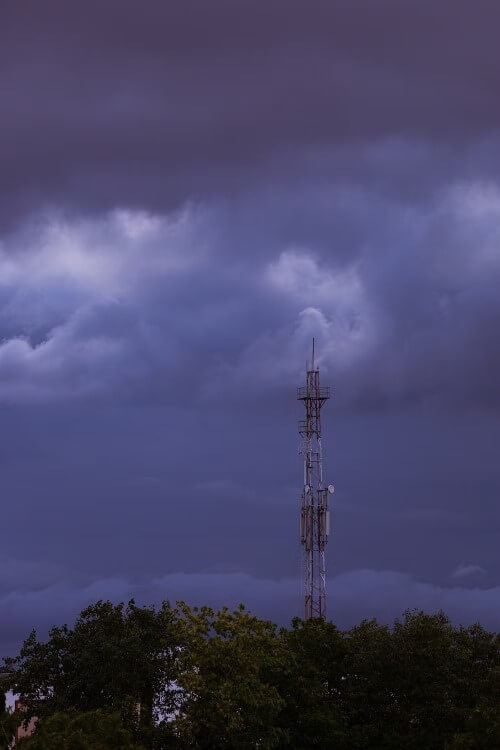On Thursday, September 21st, an area of low pressure began to form and gain organization along the Southeastern US coastline. This low-pressure system gradually deepened and developed more tropical characteristics, officially earning the designation of the 15th named storm of the 2023 Atlantic Hurricane Season on Friday, September 22nd.
Ophelia strengthened into a robust tropical storm and tracked northward over the subsequent days, ultimately making landfall in the early morning hours near Emerald Isle, NC. Ophelia continued its northward trajectory, passing through Eastern North Carolina on Saturday, September 23rd. Eventually, Ophelia weakened to a Tropical Depression on Saturday evening while over southern Virginia.


Ophelia’s arrival unleashed a range of impactful weather conditions, including substantial rainfall, strong gusty winds, and extensive river and storm surge flooding across Eastern North Carolina. This serves as a stark reminder that a tropical storm should never be underestimated.
One of the prominent consequences of Ophelia was the widespread flooding, stemming from both storm surge and heavy rainfall, which left its mark on the region. Particularly, significant storm surge flooding affected areas along the Neuse, Pamlico, and Pungo Rivers, while further inland, the Greenville area grappled with substantial flooding triggered by flash floods and the swift rise of Green Mill Run.
Ophelia’s center is expected to move across southeastern Virginia until Saturday night and then continue northward across the Delmarva Peninsula on Sunday, according to the hurricane center.
The strong winds and heavy rain created dangerous conditions near Cape Lookout. This led to the rescue of five people, including three children, from Lookout Bight on Friday. They were on a sailing vessel that was anchored but faced severe weather conditions with winds between 35 to 40 mph, as reported by the US Coast Guard.

During that time, the water had waves that were 6 to 8 feet high, and sometimes, there were even larger waves reaching 10 feet. The person who owned the boat didn’t feel safe navigating in those rough waters, so they asked for help from the Coast Guard. Fortunately, nobody got hurt.
Dominion Energy reported on Saturday afternoon that the most severely affected regions were Virginia Beach, the Peninsula, Suffolk, and Portsmouth. In total, 73,000 individuals in Hampton Roads and northeastern North Carolina experienced power outages. Dominion Energy assured that power would be fully restored by 11 p.m.

Widespread damage was observed as scattered trees and power lines were knocked down, with some falling onto homes and vehicles, spanning from North Carolina to Maryland. Ophelia left tens of thousands of residents without electrical power.
The impact of the storm extended its reach, with gusty conditions and elevated surf affecting areas as far north as New Jersey and Long Island. Delaware experienced wind gusts exceeding 30 mph at times as rain bands passed through. Meanwhile, in New Jersey, waves occasionally breached the seawall in Wildwood.
The forceful winds inflicted significant damage by tearing off the roof from a condominium complex situated in the vicinity of Ocean City, Maryland. This destructive event resulted in the exposure of the building’s interior to the elements, posing potential hazards to residents
While the storm was departing from North Carolina, authorities continued to advise caution due to the potential for flooding.
If possible, the state transportation department suggested postponing any plans until Sunday, when conditions are expected to improve.
Sunday’s weather forecast looks feasible, with mostly sunny skies and high temperatures reaching the upper 70s and only a slight chance of rain.
Despite these improvements, WTKR’s chief meteorologist, Patrick Rockey, emphasized that the risk of flooding remains. As rain continues to move inland, river water levels are anticipated to stay high in the coming days.
Patrick Rockey commended forecasters for their early identification of the storm’s development, providing individuals with sufficient time to get ready.
As per Phil Klotzbach, a hurricane researcher at Colorado State University, Ophelia marks the 16th named storm in the 2023 Atlantic hurricane season.
There’s another weather system in the Atlantic, located to the west of the Cape Verde islands, with a high probability of developing into a tropical storm within the next five days as it tracks in a west-northwest direction.
